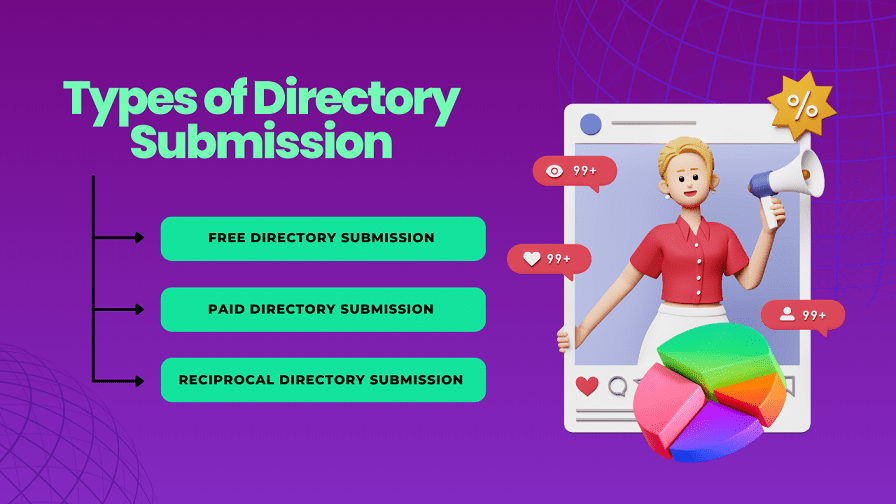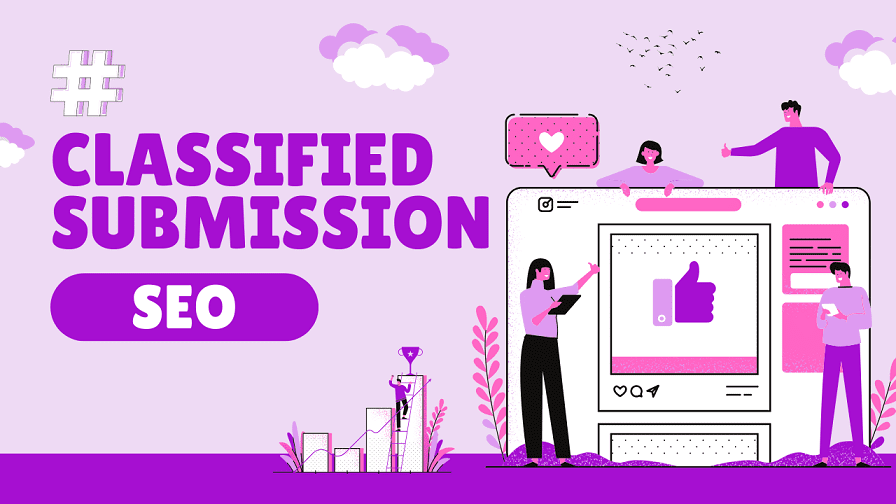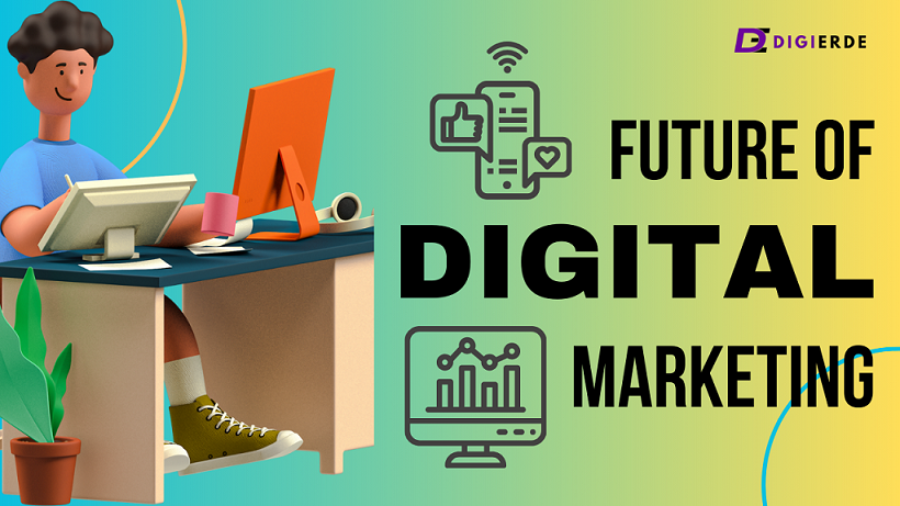Introduction to Social Media Marketing Case Studies in India
In today’s fast-paced digital world, businesses are constantly seeking innovative ways to connect with their audience. One of the most effective tools in a marketer’s arsenal is the social media marketing case study. These detailed accounts provide invaluable insights into what works and what doesn’t, especially in a diverse market like India. With over 500 million active social media users, India presents a unique opportunity to understand how brands leverage platforms like Facebook, Instagram, and LinkedIn to drive engagement, sales, and brand awareness.
This article dives deep into the most impactful social media marketing case studies in India, highlighting strategies, challenges, and key takeaways that can help businesses of all sizes optimize their social media efforts.
To explore more on how to attract potential clients for your marketing efforts, check out How to Get Clients for Digital Marketing.
Why Social Media Marketing Case Studies Matter
Social media marketing case studies offer more than just success stories—they serve as a roadmap for marketers looking to refine their strategies. Why spend countless hours experimenting when you can learn from brands that have already mastered the art of engaging audiences?
Benefits of Learning from Case Studies
- Proven Strategies: Case studies showcase tactics that have been tried and tested in real-world scenarios.
- Industry Insights: They reveal industry-specific challenges and how to overcome them.
- Inspirational Ideas: Sometimes, all you need is a spark of inspiration to kickstart a successful campaign.
By analyzing social media marketing case studies in India, you can uncover how local brands navigate the complexities of regional languages, cultural differences, and platform-specific algorithms.
The Role of Social Media in India’s Business Growth
India is one of the fastest-growing digital economies, and social media is at the heart of this transformation. From small startups to multinational corporations, businesses are leveraging social media to expand their reach and enhance customer engagement.
Social Media Penetration in India
According to recent statistics, India has over 700 million internet users, with a significant portion active on social media platforms. This widespread adoption makes social media an essential component of any marketing strategy.
Impact on Different Business Sectors
- Small Businesses: Platforms like Instagram and Facebook offer affordable marketing solutions that help small businesses reach a wider audience.
- Medium Enterprises: LinkedIn and YouTube provide opportunities for thought leadership and brand positioning.
- Large Corporations: Companies like Flipkart and Zomato use social media for large-scale campaigns that generate massive engagement and revenue.
Understanding how different businesses leverage social media can provide valuable insights into crafting your own strategies.
Key Platforms for Social Media Marketing in India
Not all social media platforms are created equal, and their effectiveness can vary depending on your target audience and business goals. Here’s a breakdown of the most popular platforms used in social media marketing case studies in India:
1. Facebook
With over 300 million users in India, Facebook remains a dominant platform for both B2C and B2B marketing. Brands use it for:
- Paid advertising campaigns
- Community building through groups
- Customer support via Messenger
If you’re new to Facebook ads or need guidance on creating effective campaigns, read this guide: How to Create Facebook Ads.
2. Instagram
Known for its visual appeal, Instagram is ideal for brands targeting younger audiences. Common strategies include:
- Influencer collaborations
- Interactive stories and reels
- User-generated content campaigns
3. LinkedIn
This platform is a favorite among B2B marketers and professionals. It’s commonly used for:
- Thought leadership articles
- Networking and recruitment
- Industry-specific webinars and events
4. YouTube
Video content is on the rise, and YouTube is leading the charge. Brands use it for:
- Product demonstrations
- Tutorials and how-to videos
- Influencer partnerships
5. Twitter
While its user base is smaller, Twitter is powerful for real-time engagement and customer feedback. Brands often use it for:
- Announcing product launches
- Engaging in trending conversations
- Offering customer support
By understanding the strengths and weaknesses of each platform, businesses can better allocate their resources and maximize their ROI.
Top Social Media Marketing Case Studies in India
Let’s dive into some of the most successful social media campaigns in India and explore what made them stand out.
1. Amul’s Digital Campaigns
Amul, a household name in India, is renowned for its witty and timely social media posts. Their campaigns often:
- Capitalize on trending topics
- Use humor to engage audiences
- Incorporate regional languages to connect with diverse demographics
2. Zomato’s Social Media Strategy
Zomato has mastered the art of engaging with its audience through quirky content and memes. Their strategy focuses on:
- Creating relatable content for food lovers
- Engaging with followers through interactive posts
- Running contests and giveaways
3. Flipkart’s Festive Campaigns
Flipkart’s festive campaigns are a masterclass in leveraging social media for e-commerce. Key elements include:
- Collaborations with influencers and celebrities
- Exclusive offers promoted through social media ads
- Engaging video content showcasing products
4. Swiggy’s Engagement Strategy
Swiggy has built a loyal customer base by focusing on customer engagement. Their social media efforts include:
- Quick responses to customer queries and feedback
- Creative campaigns highlighting user stories
- Fun, interactive polls and quizzes
These case studies illustrate how brands can achieve success by tailoring their strategies to the unique characteristics of the Indian market.
Success Factors Behind These Case Studies
Successful social media campaigns don’t happen by chance. They’re built on a foundation of strategic planning, audience understanding, and consistent execution. Let’s explore the key success factors that made the previously mentioned social media marketing case studies in India so impactful.
1. Understanding the Target Audience
One of the most crucial elements of any marketing strategy is knowing your audience. Indian consumers are incredibly diverse, with varying preferences, languages, and cultural nuances. Brands like Amul and Zomato excel because they:
- Conduct thorough market research to identify audience demographics.
- Tailor their content to resonate with different regional and cultural groups.
- Engage directly with followers to understand their needs and preferences.
For instance, Amul’s posts often reference trending local events, which immediately grab the attention of their audience. By addressing specific cultural moments, brands create a sense of connection and relevance.
2. Consistent Brand Voice and Messaging
Another critical factor is maintaining a consistent brand voice across all platforms. Whether it’s witty, professional, or heartfelt, the tone should reflect the brand’s identity. Successful campaigns:
- Stick to a recognizable voice that aligns with their brand image.
- Ensure uniform messaging across different platforms to reinforce their identity.
- Adapt their tone slightly to suit platform-specific audiences while staying true to their core messaging.
Zomato, for example, has carved a niche with its humorous and relatable tone, which has become synonymous with its brand.
3. Use of Regional Content
India’s linguistic diversity is a significant challenge—and opportunity—for marketers. Brands that incorporate regional languages and cultural references often enjoy higher engagement rates. Strategies include:
- Creating multilingual content to appeal to different regions.
- Using regional festivals and events as themes for campaigns.
- Collaborating with local influencers who can communicate effectively with their audience.
Flipkart’s festive campaigns are a testament to this, as they often integrate local languages and customs, making their campaigns feel personal and relatable.
Challenges Faced in Social Media Marketing in India
While the Indian market presents immense opportunities, it also comes with its own set of challenges. Understanding and overcoming these obstacles is key to successful social media marketing.
1. Language Diversity
India is home to 22 officially recognized languages and hundreds of dialects. This diversity poses a challenge for brands that aim to reach a broad audience. Solutions include:
- Investing in multilingual content creation to cater to different language groups.
- Using visuals and videos to transcend language barriers.
- Hiring regional experts to ensure accurate translations and culturally appropriate messaging.
2. Cultural Differences
India’s cultural diversity means that what works in one region might not resonate in another. For example, a humorous campaign that appeals to a metropolitan audience might not be well-received in a conservative rural area. Brands must:
- Conduct regional cultural research before launching campaigns.
- Avoid one-size-fits-all approaches and instead tailor campaigns to specific regions.
- Stay sensitive to cultural norms and values to avoid backlash.
3. Platform-Specific Challenges
Different social media platforms have their own algorithms, user behaviors, and best practices. Navigating these can be tricky, especially when trying to maintain consistency across platforms. Brands can:
- Allocate platform-specific budgets to focus on where their audience is most active.
- Experiment with platform-specific content formats such as Instagram Reels or LinkedIn articles.
- Monitor algorithm changes and adjust strategies accordingly.
For those looking to ensure their digital marketing campaigns yield high ROI, explore these 10 Proven Methods for Testing Digital Marketing Campaigns to Boost ROI.
Innovative Social Media Strategies Used in India
To stand out in a competitive market, brands must adopt innovative strategies that capture attention and drive engagement. Here are some of the most effective techniques used in social media marketing case studies in India.
1. Influencer Marketing
Influencer marketing has exploded in popularity, with brands leveraging the reach and credibility of influencers to promote their products. Successful campaigns:
- Collaborate with influencers who align with their brand values.
- Use micro-influencers for niche markets to achieve higher engagement rates.
- Track influencer performance to measure ROI and optimize future collaborations.
Swiggy, for instance, frequently partners with food bloggers and influencers to showcase their offerings, leading to increased brand visibility and customer trust.
2. Regional Language Campaigns
As mentioned earlier, regional language campaigns can significantly enhance engagement. Brands that invest in this strategy:
- Translate content into multiple languages to expand their reach.
- Create culturally relevant content that resonates with regional audiences.
- Leverage regional festivals as opportunities to connect with local communities.
3. Data-Driven Marketing
Data is the backbone of effective marketing. Brands that harness the power of data analytics can:
- Identify audience preferences and behaviors to tailor their campaigns.
- Track campaign performance in real-time and make necessary adjustments.
- Predict trends and stay ahead of the competition.
Flipkart’s data-driven approach to social media marketing allows them to optimize their campaigns for maximum impact, particularly during high-traffic periods like festive sales.
How Small Businesses in India Leverage Social Media
Small businesses often have limited budgets, but social media offers them an affordable way to compete with larger players. Let’s explore how small businesses in India are making the most of social media marketing.
1. Affordable Marketing Options
Social media platforms provide cost-effective advertising solutions that allow small businesses to:
- Run targeted ads with minimal budgets.
- Boost organic posts to reach a wider audience.
- Leverage free tools such as Facebook Groups and Instagram Stories to engage with their audience.
2. Building Brand Awareness
Small businesses can use social media to establish and grow their brand presence. Strategies include:
- Sharing customer testimonials and success stories.
- Posting behind-the-scenes content to humanize their brand.
- Engaging with followers through comments, messages, and polls.
3. Customer Engagement Through Localized Content
Localized content helps small businesses connect with their community and build loyal customer bases. Tactics include:
- Using local landmarks and cultural references in posts.
- Collaborating with local influencers to reach a niche audience.
- Participating in community events and showcasing them on social media.
If you are a small business looking to enhance your digital presence, consider exploring Digital Marketing Services from DigiErde.
Future Trends in Social Media Marketing in India
The digital landscape is constantly evolving, and staying ahead of the curve is essential for success. Here are some future trends to watch out for in social media marketing case studies in India.
1. Growth of Video Content
Video content is becoming increasingly popular, with platforms like YouTube, Instagram, and TikTok driving the trend. Future campaigns will:
- Focus on short, engaging videos that capture attention quickly.
- Incorporate live streaming to connect with audiences in real-time.
- Use video storytelling to create emotional connections with viewers.
2. Rise of Vernacular Content
As internet penetration continues to grow in rural areas, the demand for vernacular content will increase. Brands will:
- Invest in creating content in regional languages to expand their reach.
- Collaborate with regional influencers to build trust with local audiences.
- Develop region-specific campaigns that address local needs and preferences.
3. AI-Driven Marketing Campaigns
Artificial intelligence is set to revolutionize social media marketing by:
- Automating customer interactions through chatbots and virtual assistants.
- Analyzing data to provide personalized recommendations and content.
- Optimizing ad placements based on user behavior and preferences.
Measuring the Success of Social Media Marketing Campaigns
For any social media marketing strategy to be effective, it must be measurable. After all, you can’t improve what you don’t measure. Tracking the performance of social media campaigns ensures that businesses understand what works, what doesn’t, and where to invest their resources. Here’s how companies featured in social media marketing case studies in India measure their success.
1. Key Performance Indicators (KPIs)
KPIs are the metrics that define the success of a social media campaign. Common KPIs include:
- Engagement Rate: Measures how actively users interact with your content through likes, comments, shares, and saves.
- Reach and Impressions: Tracks how many unique users saw your content and how many times it was displayed.
- Click-Through Rate (CTR): Indicates the percentage of users who clicked on a link within your post.
- Conversion Rate: Measures how many users completed a desired action, such as signing up for a newsletter or making a purchase.
- Customer Sentiment: Analyzes user comments and feedback to gauge brand perception.
By monitoring these KPIs, businesses can adjust their strategies to optimize performance.
2. Tools for Tracking and Analyzing Performance
Several tools help businesses track and analyze their social media campaigns:
- Google Analytics: Provides insights into website traffic driven by social media.
- Hootsuite: Offers a comprehensive dashboard to manage and measure multiple social media accounts.
- Sprout Social: Tracks engagement, reach, and other critical metrics.
- HubSpot: Analyzes social media campaigns alongside other marketing efforts.
These tools offer real-time data, enabling businesses to pivot their strategies when needed.
3. Benchmarking Against Competitors
It’s not enough to track your performance in isolation. Benchmarking against competitors can provide valuable context. Brands often:
- Compare engagement rates and follower growth with similar businesses.
- Analyze competitor content to identify gaps and opportunities.
- Use competitive analysis tools like SEMrush and BuzzSumo to monitor industry trends.
By benchmarking, businesses can set realistic goals and stay ahead of the competition.
Common Mistakes to Avoid in Social Media Marketing
Even the most well-intentioned social media campaigns can go awry. Avoiding common pitfalls is crucial to achieving success. Let’s explore some of the mistakes frequently seen in social media marketing case studies in India and how to avoid them.
1. Ignoring Customer Feedback
Social media is a two-way street. Brands that ignore customer feedback risk alienating their audience. Common issues include:
- Failing to respond to comments and messages promptly.
- Overlooking negative feedback instead of addressing it constructively.
- Ignoring suggestions from loyal followers.
Solution: Create a dedicated team to manage customer interactions and ensure timely responses to both positive and negative feedback.
2. Lack of a Clear Strategy
Many brands jump into social media without a well-defined plan, leading to inconsistent messaging and poor results.
- Problem: Posting random content without a cohesive strategy.
- Consequence: Low engagement and unclear brand identity.
Solution: Develop a content calendar that outlines your goals, target audience, and key messages. Stick to a consistent posting schedule and evaluate your performance regularly.
3. Overlooking Mobile Users
India has a massive mobile-first audience, yet some brands still design their campaigns with desktop users in mind.
- Problem: Content that isn’t optimized for mobile devices.
- Consequence: Poor user experience, leading to lower engagement.
Solution: Ensure all content is mobile-friendly, from visuals to website links. Use vertical video formats and mobile-optimized landing pages.
The Role of Influencers in Social Media Marketing in India
Influencer marketing has become a powerful tool for brands looking to expand their reach and build credibility. In India, the influencer ecosystem is thriving, with creators across various niches and platforms.
1. Types of Influencers
Influencers can be categorized based on their reach and niche:
- Macro-Influencers: These influencers have a large following, often exceeding 100,000. They are typically celebrities or industry experts.
- Micro-Influencers: With smaller followings (typically between 1,000 and 100,000), these influencers often have higher engagement rates and a more niche audience.
- Nano-Influencers: These are everyday individuals with fewer than 1,000 followers but high influence within their community.
2. Successful Influencer Collaborations
Indian brands have successfully collaborated with influencers to launch campaigns that drive engagement and sales. For example:
- Flipkart partnered with fashion influencers during their festive sales, showcasing products and driving traffic to their platform.
- Swiggy collaborated with food bloggers to promote new offerings, resulting in increased app downloads and orders.
- Nykaa frequently works with beauty influencers to demonstrate product usage and boost sales.
3. Measuring Influencer Campaign Success
To gauge the success of influencer collaborations, brands monitor:
- Engagement rates on sponsored posts.
- Traffic and conversions driven by influencer-generated content.
- Brand mentions and hashtag usage during the campaign.
By strategically partnering with influencers, brands can tap into new audiences and build trust with potential customers.
Best Practices for Creating Effective Social Media Campaigns
Crafting a successful social media campaign requires a blend of creativity, strategy, and execution. Here are some best practices derived from social media marketing case studies in India.
1. Set Clear Goals
Before launching a campaign, define what you want to achieve. Common goals include:
- Increasing brand awareness
- Driving website traffic
- Boosting sales or conversions
- Engaging with your audience
2. Content Planning and Scheduling
A well-planned content calendar ensures consistency and relevance. Steps include:
- Identifying key dates such as festivals and product launches.
- Scheduling posts in advance using tools like Buffer or Hootsuite.
- Balancing different content types such as images, videos, and text-based posts.
3. Engage with the Audience Regularly
Social media is about building relationships, not just broadcasting messages. Brands should:
- Respond to comments and messages promptly.
- Encourage user-generated content by running contests or asking for feedback.
- Host live sessions and Q&A sessions to interact with followers in real time.
Conclusion
Social media marketing in India is both a challenge and an opportunity. By studying successful social media marketing case studies in India, businesses can learn valuable lessons and apply them to their own campaigns. The key to success lies in understanding the diverse Indian audience, leveraging the right platforms, and continuously measuring and refining strategies.
Embrace the power of social media, stay innovative, and keep learning from those who have already paved the way. With the right approach, your brand can achieve remarkable success in the ever-evolving digital landscape of India.
FAQs
1. What are social media marketing case studies?
Social media marketing case studies are detailed analyses of successful campaigns, highlighting strategies, challenges, and outcomes.
2. Why are social media marketing case studies in India important?
They provide insights into how brands navigate India’s diverse market and offer proven tactics that can be adapted for different industries.
3. Which platforms are most effective for social media marketing in India?
Facebook, Instagram, LinkedIn, YouTube, and Twitter are among the most popular platforms.
4. How can small businesses benefit from social media marketing in India?
Small businesses can use social media to build brand awareness, engage with customers, and run cost-effective advertising campaigns.
5. What are the future trends in social media marketing in India?
Video content, vernacular language campaigns, and AI-driven marketing are expected to dominate the future landscape.
























